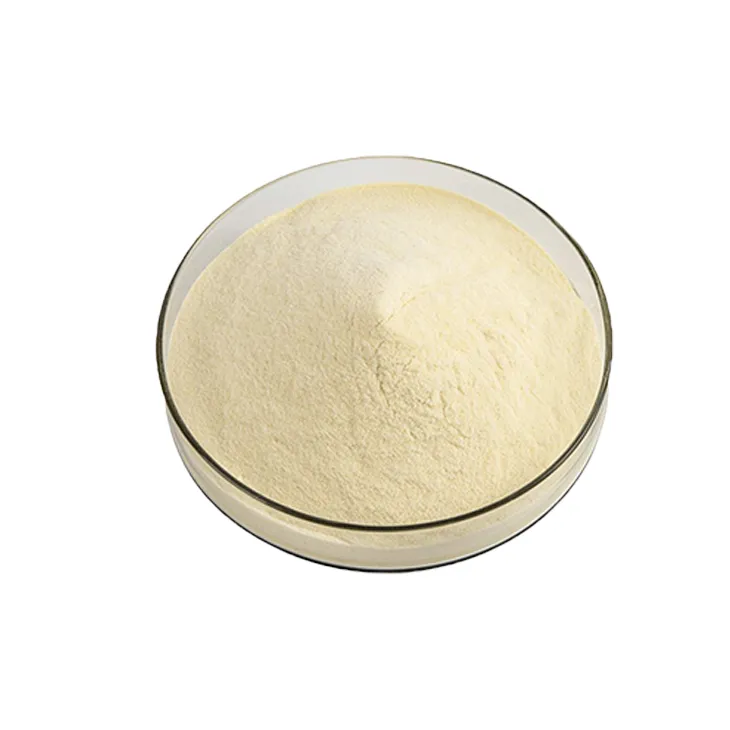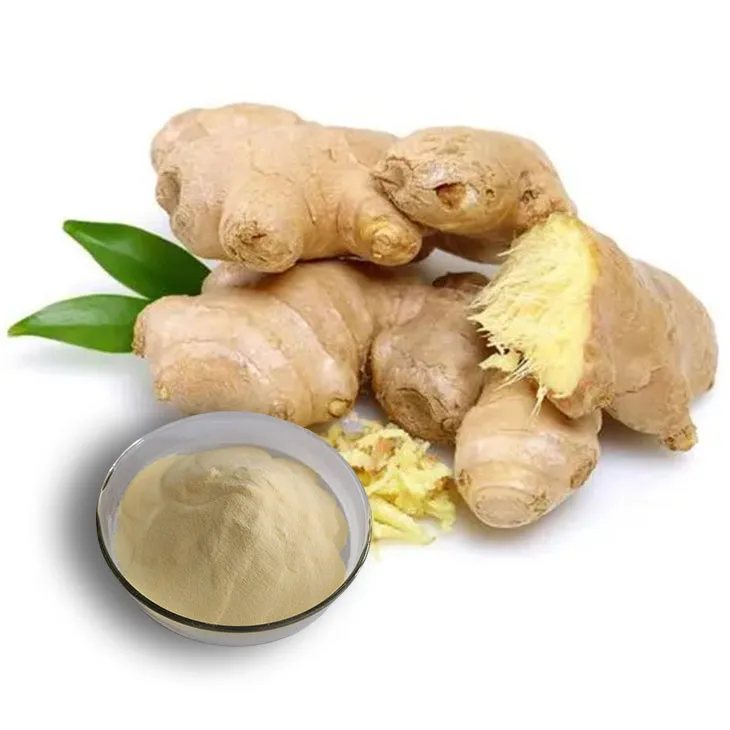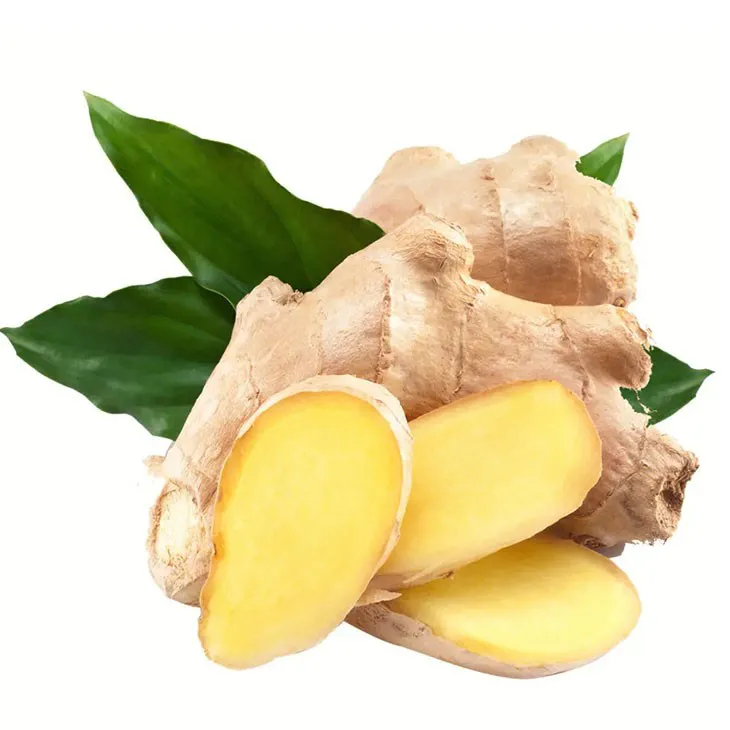- 0086-571-85302990
- sales@greenskybio.com
Extract ginger extract by steam distillation.
2024-11-29

1. Introduction
Ginger, known scientifically as Zingiber officinale, has been used for centuries in various cultures for its medicinal, culinary, and aromatic properties. The extraction of Ginger Extract through steam distillation is a well - established method that allows for the isolation of its valuable components. This process is not only important in the field of natural product extraction but also has significant implications in multiple industries such as food, pharmaceuticals, and cosmetics.

2. Basic Principles of Steam Distillation
2.1 Vapor - Liquid Equilibrium
Steam distillation is based on the principle of vapor - liquid equilibrium. When a mixture of ginger and water is heated, the volatile components in ginger, along with water vapor, are formed. The total vapor pressure of the mixture is the sum of the vapor pressures of the individual components. At a certain temperature, the vapor pressure of the mixture becomes equal to the atmospheric pressure, and the mixture boils.
2.2 Selective Volatilization
The volatile compounds in ginger, such as essential oils, have different vapor pressures compared to water. This difference in vapor pressures allows for the selective volatilization of the ginger compounds along with water vapor. The components with higher vapor pressures will vaporize more readily, and as a result, they can be separated from the non - volatile components of ginger.
3. The Steam Distillation Process for Ginger Extract
3.1 Preparation of Ginger
- Fresh ginger is first washed thoroughly to remove any dirt or impurities.
- It is then sliced or grated to increase the surface area. This is important as it allows for better interaction with steam during the distillation process.
3.2 The Distillation Setup
- A typical steam distillation apparatus consists of a still, a condenser, and a receiver. The still is where the ginger and water mixture is heated.
- The condenser cools the vapor mixture back into liquid form. Commonly, a water - cooled condenser is used, where cold water circulates around the condenser tube to cool the vapor.
- The receiver is used to collect the distillate, which contains the Ginger Extract along with water.
3.3 The Distillation Process
- The sliced or grated ginger is placed in the still along with a sufficient amount of water. The ratio of ginger to water can vary depending on the desired concentration of the extract, but a common ratio is about 1:3 (ginger: water).
- The still is then heated slowly. As the temperature rises, steam is generated, and it passes through the ginger, carrying the volatile components with it.
- The steam - ginger volatile mixture then enters the condenser. As it cools, the vapor condenses back into a liquid, which is collected in the receiver.
- The distillation process is usually continued for a specific period, which can range from a few hours to several days depending on the scale of the operation and the desired yield of the extract.

4. Components of Ginger Extract Obtained by Steam Distillation
4.1 Essential Oils
Ginger essential oils are one of the main components of the steam - distilled ginger extract. These oils contain a variety of compounds such as zingiberene, bisabolene, and curcumene, which are responsible for the characteristic aroma of ginger. The essential oils also possess various biological activities, including anti - inflammatory, antimicrobial, and antioxidant properties.
4.2 Other Volatile Compounds
Besides essential oils, there are other volatile compounds present in the ginger extract. These may include aldehydes, ketones, and esters. Each of these compounds contributes to the overall flavor and aroma profile of the ginger extract and may also have potential biological activities.
5. Benefits of Ginger Extract
5.1 Medicinal Benefits
- Anti - inflammatory properties: Ginger extract has been shown to reduce inflammation in the body. It can be effective in treating conditions such as arthritis, where inflammation of the joints is a major problem.
- Antimicrobial activity: It has the ability to inhibit the growth of various microorganisms, including bacteria and fungi. This makes it potentially useful in the treatment of infections.
- Antioxidant effects: The extract contains compounds that can scavenge free radicals in the body, protecting cells from oxidative damage. This may contribute to the prevention of chronic diseases such as cancer and heart disease.
5.2 Culinary Benefits
- Flavor enhancement: Ginger extract adds a unique and warm flavor to a variety of dishes. It is commonly used in both sweet and savory recipes, such as gingerbread, stir - fries, and curries.
- Aroma addition: The pleasant aroma of ginger extract can enhance the overall sensory experience of food. It can also stimulate the appetite.
5.3 Cosmetic Benefits
- Skin care: Ginger extract can be used in skin care products due to its antioxidant and anti - inflammatory properties. It may help in reducing skin inflammation, improving skin tone, and protecting the skin from environmental damage.
- Hair care: In hair care, it can be beneficial for promoting hair growth and improving the health of the scalp. The antimicrobial properties may also help in preventing scalp infections.
6. Applications of Ginger Extract in Various Industries
6.1 Food Industry
- As a flavoring agent, ginger extract is used in a wide range of food products, including beverages, confectionery, and processed foods. For example, ginger - flavored sodas, ginger candies, and ginger - spiced snacks are popular items.
- It is also used in the preservation of food due to its antimicrobial properties. Ginger extract can help in extending the shelf - life of certain products by inhibiting the growth of spoilage - causing microorganisms.
6.2 Pharmaceutical Industry
- Ginger extract is used in the formulation of various medications. It can be found in dietary supplements aimed at providing anti - inflammatory, antioxidant, or digestive benefits.
- Research is also being conducted on the potential use of ginger extract in the treatment of more serious diseases, such as cancer and neurodegenerative disorders. Although more studies are needed, the initial results are promising.
6.3 Cosmetic Industry
- Many cosmetic products, such as creams, lotions, and shampoos, incorporate ginger extract. In skin care products, it is used for anti - aging, anti - inflammatory, and antioxidant effects.
- In hair products, ginger extract is used to improve hair texture, promote hair growth, and prevent dandruff. The natural and beneficial properties of ginger make it an attractive ingredient in the cosmetic industry.
7. Conclusion
Steam distillation is a valuable method for obtaining ginger extract, which is rich in essential oils and other volatile compounds. The ginger extract has numerous benefits, including medicinal, culinary, and cosmetic advantages. Its applications in various industries, such as food, pharmaceuticals, and cosmetics, are wide - ranging. As research continues, it is likely that more uses for ginger extract will be discovered, further highlighting the importance of this natural product and the steam distillation process used to obtain it.
FAQ:
What are the basic principles of steam distillation for ginger extract?
Steam distillation for ginger extract is based on the fact that ginger contains volatile compounds. When steam is passed through the ginger material, the volatile components in ginger, which have relatively high vapor pressures at the boiling point of water, get vaporized along with the steam. These vaporized substances are then condensed back to a liquid state, separating from the non - volatile components of ginger. This allows for the extraction of the ginger extract rich in its characteristic volatile oils and other bioactive compounds.
What are the main components in ginger extract obtained by steam distillation?
The main components in ginger extract obtained by steam distillation include gingerols, shogaols, zingiberene, and other volatile oils. Gingerols are responsible for the pungent flavor and some of the health - promoting properties of ginger. Shogaols are formed during the heating or drying process of ginger and also contribute to its unique flavor and potential medicinal effects. Zingiberene is a major volatile oil component that gives ginger its characteristic aroma.
What are the benefits of ginger extract obtained by steam distillation?
The ginger extract obtained by steam distillation has several benefits. In the food industry, it can be used as a natural flavoring agent due to its characteristic spicy and aromatic profile. In the pharmaceutical and cosmetic industries, it has antioxidant, anti - inflammatory, and antimicrobial properties. It may help in reducing nausea, improving digestion, and has potential applications in skin care products for its anti - aging and soothing effects.
How is the quality of ginger extract ensured during steam distillation?
To ensure the quality of ginger extract during steam distillation, several factors need to be considered. Firstly, the quality of the raw ginger material is crucial. High - quality, fresh ginger should be used. The distillation process should be carefully controlled in terms of temperature, pressure, and distillation time. Maintaining the appropriate steam flow rate is also important. Additionally, proper purification and filtration steps after distillation can help remove any impurities and ensure a high - quality final extract.
What are the applications of ginger extract obtained by steam distillation in the food industry?
In the food industry, ginger extract obtained by steam distillation has numerous applications. It can be used in the production of beverages such as ginger ale, herbal teas, and some alcoholic drinks to add flavor. It is also used in baking products like gingerbread, cookies, and cakes. In the confectionery industry, it can be added to candies and chocolates for a unique ginger flavor. Moreover, it can be used in savory dishes, marinades, and sauces to enhance the flavor profile.
Related literature
- Steam Distillation of Ginger: Optimization of Process Parameters for Enhanced Yield of Bioactive Compounds"
- "The Chemical Composition and Therapeutic Potential of Ginger Extract Obtained by Steam Distillation"
- "Applications of Steam - Distilled Ginger Extract in the Food and Pharmaceutical Industries"
- ▶ Hesperidin
- ▶ citrus bioflavonoids
- ▶ plant extract
- ▶ lycopene
- ▶ Diosmin
- ▶ Grape seed extract
- ▶ Sea buckthorn Juice Powder
- ▶ Beetroot powder
- ▶ Hops Extract
- ▶ Artichoke Extract
- ▶ Reishi mushroom extract
- ▶ Astaxanthin
- ▶ Green Tea Extract
- ▶ Curcumin Extract
- ▶ Horse Chestnut Extract
- ▶ Other Problems
- ▶ Boswellia Serrata Extract
- ▶ Resveratrol Extract
- ▶ Marigold Extract
- ▶ Grape Leaf Extract
- ▶ blog3
- ▶ blog4
-
Organic Taurine Powder Suppliers.
2024-11-29
-
Bulk purchase of black pepper extract.
2024-11-29
-
Ginger extract of the best quality.
2024-11-29
-
Wholesale Passion Fruit Extract Suppliers.
2024-11-29
-
Organic Genistein, Australia.
2024-11-29
-
Saponin Extract
2024-11-29
-
Artichoke Extract
2024-11-29
-
Selenium yeast
2024-11-29
-
Tinospora cordifolia extract
2024-11-29
-
Astaxanthin
2024-11-29
-
Nettle leaf extract
2024-11-29
-
Moringa powder
2024-11-29
-
Bamboo Leaf extract
2024-11-29
-
Genistein
2024-11-29
-
Mangosteen extract powder
2024-11-29





















